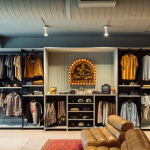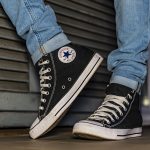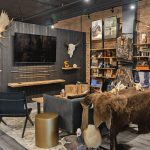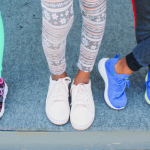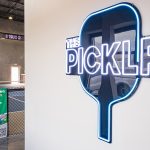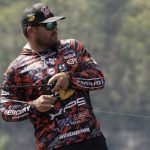Sporting goods manufacturers as a whole once again saw gains in both sales and net income over the year-ago period in the fourth quarter, with the top line increases again outpacing the bottom line. As the cost of materials, production, and distributing product to customers increases, vendors are increasingly left fighting for every last margin point in an attempt to translate the improvements in sales down to the bottom line.
For Q4, the vendors covered in the review posted a diverse group of results, but the overarching trend looks to be good as the industry had the “must-have” holiday gifts in Heelys and Crocs, the “must-wear” fabrications as consumers look to replace even basic tees with something performance-oriented, and a “must-be-see-in” Denali jacket from North Face.
Fourth quarter results are posted for those companies that have reported for the period ended closest to the end of December. Still, because the report is not a clear picture of the entire industry, SEW feels the total numbers are less significant than the trending information provided in the percentage increases and decreases. SportsOneSource does a broader analysis of the industry each quarter by comparing vendor wholesale performance against retail sales performance based on data provided through SportScanINFO. The SportsOneSource Market View 2007 Report reflecting both wholesale and retail performance of brands will be available in late April.
The chart reflects mid-teens gains in sales during the fourth quarter, evenly distributed between both softgoods and hardgoods manufacturers. Profits for the companies measured rose in the mid-single-digits. The majority of the revenue growth came organically or was driven by new public companies like Heelys and Crocs — both of whom grew meteorically against small bases — and Under Armour. In softgoods, there were only two acquisitions of note, though neither was notable when looking at the overall market. Gildans acquisition of Kentucky Derby Hosiery turned a 19% organic growth rate into a 54% revenue gain for the quarter, while Delta Apparels acquisition of FunTees drove the 26% sales gain overall as organic sales decreased 10% for the period.
Looking at the separate softgoods categories, both Athletic and Outdoor footwear saw mid-teens sales growth in Q4, while apparel saw low-30s gains, with the DLA and GIL acquisitions driving very little of the overall softgoods sales increase, accounting for only approximately 60 basis points of growth.
In hardgoods, only Eastons merger with Riddell Bell would have caused a major shift on the overall sales number, but due to the company delaying its filing of fiscal 2006 financial results, it was not included in this quarters review. Thule also benefited from the inclusion of acquired businesses to achieve its 57% sales jump, but the effect on the overall number was minimal. Despite the warm winter, snow sports manufacturers saw the largest sales growth in hardgoods, up in the mid-teens mostly on K2s strength, while golf and fitness companies were both up around 10% for the period.
Gross margin on a whole market basis improved over 280 basis points during the fourth quarter, with both the softgoods and hardgoods combined entities providing GM gains. When looking at individual companies, however, a very different picture comes to light as strong gains at some companies were offset by losses at others.
On the softgoods side of things, Deckers, Stride Rite and Crocs all lead improvements in margins with Crocs and SRR both working on integration to boost margins, while Deckers posted gains on lower materials and labor costs as well as better inventory management. The sharp improvements seen at these companies were slightly offset by sharp decreases at Ashworth, Delta and Phoenix, but not enough to bring the overall softgoods margin below last years level.
In hardgoods, the market saw modest gains in GM at many companies, while a few posted very large declines. In fact, it was the golf hardgoods manufacturers that were most in flux as TaylorMade-adidas Golf posted the largest basis point gain in gross margin and Aldila and True Temper partnered up to both post over 1,000 bps decreases. For Aldila, the margin hit came as a result of decreased branded shaft sales combined with increased OEM shaft sales, while for True Temper the decline came from a shift to less-profitable graphite product from steel.
As it did in the year-ago quarter, K2s one-time impairment charge continues to be the dominant market force on the bottom line. Without the $250 million charge last year, a meteoric 53% net income growth rate for the overall market becomes a 17.0% increase in net income for Hardgoods vendors, fueling an industry-wide improvement of 7.4%.
Softgoods vendors saw mid-singles gains in net income with several companies posting positive income after losses last year, but just as many going the opposite direction. However, strong gains from the same companies that saw margin improvements drove the overall growth despite the few that posted losses. The mid-singles growth was well behind the sales trend, though, causing return on sales for softgoods vendors to decrease 70 basis points.
As the aforementioned K2 write-down caused the hardgoods gain to be more or less beyond measure other than simply “versus a loss last year,” the real picture comes into focus when using a net income of $14.7 million for K2 last year. Return on sales for hardgoods vendors improved to 6.6% from 6.4% last year when excluding the charge with True Temper posting the worst ROS of the bunch. Interestingly, snow sports manufacturers saw the strongest ROS ratio at 15%, besting all hardgoods categories.
All in all, the fourth quarter turned out pretty well for vendors in the sporting goods industry, especially when considering the strength seen in sales, but a close eye needs to be kept on the margin line to keep earnings growing at the same pace.

